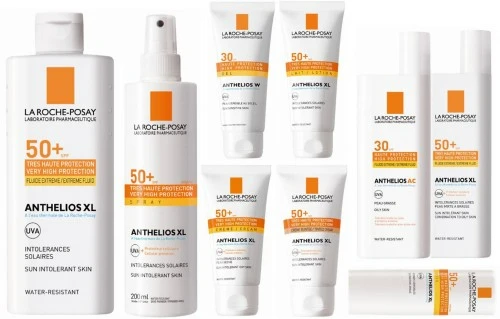You wouldn’t expect the topic of sunscreens (even if we’re discussing all about highly ranked sun filters Mexoryl SX or Mexoryl XL) to be high on anyone’s list in the dead of winter.
And although you probably won’t suffer from a sunburn in the Pacific Northwest during the cold, dreary and grey months, your skin will still be exposed to damaging UVA rays. That’s why it’s important to use sunscreen every day, year round.
What is Mexoryl in Sunscreen?
There are two Mexoryl molecules in sunscreen: Mexoryl SX and Mexoryl XL. They have been patented by cosmetics company L’Oreal, owners of the La Roche Posay brand (which includes much sought after Anthelios sunscreens). You can also find these filters in Ombrelle sunscreens (also owned by L’Oreal).
What is the Difference Between Mexoryl SX XL?
Whether it’s Mexoryl SX or Mexoryl XL, sunscreens with Mexory really deliver!
While they are both Mexoryls are excellent ingredients, there are some key differences:
- Mexoryl SX blocks the full range of UVA rays—deep penetrating and skin damaging rays—and some UVB rays as well. It’s the trade name for ecamsule, or terephthalylidene dicamphor sulfonic acid.
- Mexoryl XL blocks all UVB rays—shorter penetrating and sunburn inducing—plus some UVA rays. It is the trade name for drometrizole trisiloxane.
It’s when these two are combined that things get really juicy. Their actions complement one another, giving the very best results.
Both also offer photostable UVA and UVB protection, meaning that they do not degrade when exposed to UV light, resulting in long-lasting protection. They are also well tolerated by all skin types—including sensitive skin, and, are hypoallergenic.

Is Mexoryl a Good Sunscreen?
The combination of the two Mexoryl filters provides excellent protection against the full UVA/UVB spectrum. But the manufacturers don’t stop there—most sunscreens that use this combination also benefit from the addition of other sun filters including avobenzone, octocrylene, titanium dioxide and Tinosorb S.
The protection afforded by Mexoryl SX/Mexoryl XL technology in sunscreens makes it a top choice amongst dermatologists and other skin care professionals. Not only does skin get the ultimate in UV protection, but because both molecules are photostable, your skin is super protected with it matters most. You can view the full range of Mexoryl SX and Mexoryl XL sunscreens here.
Is Mexoryl XL Safe?
Both the Mexoryl molecules are safe.
Mexoryl XL is particularly suitable for water-resistant formulations. And, as mentioned above, its photostable UVA and UVB protection, means it won’t break down when exposed to UV light, giving you long lasting protection.
Like Mexoryl SX, it can be used by all skin types. And, a study¹ shows that even at concentrations higher than those found in the sea, Mexoryl XL is not toxic to coral reefs.
[1] Fel, JP., Lacherez, C., Bensetra, A. et al. Photochemical response of the scleractinian coral Stylophora pistillata to some sunscreen ingredients. Coral Reefs 2019 38, 109–122.



